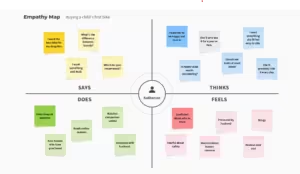Haptic technology is transforming e-commerce by adding haptic feedback, enhancing user engagement, creating more immersive, tactile shopping experiences online.

In the fast-evolving world of digital shopping, user experience is paramount.
Haptic technology has emerged as a game-changer for e-commerce user interfaces, offering tactile feedback that enhances customer engagement and satisfaction. By simulating touch sensations, haptics enables consumers to virtually feel and interact with products, which in turn builds confidence in online purchases.
As e-commerce continues to grow, integrating haptic feedback into online shopping platforms takes the user experience to the next level. It makes interactions more immersive and engaging, fostering stronger connections between customers and products.
Understanding the role of haptics is essential for businesses looking to stay competitive in the online retail market. This transformative technology is becoming a key factor in shaping the future of digital shopping.
In this article, Design Journal delves into the increasing significance of haptics in e-commerce UI and explores how it is revolutionizing the shopping experience, benefiting both customers and businesses alike.
What is Haptics, and how does it enhance e-commerce UI?
Haptic technology is revolutionizing e-commerce by adding haptic feedback, enhancing user engagement, and creating more immersive, tactile shopping experiences online.

In e-commerce, haptic technology allows customers to feel product textures or vibrations that mimic real-world interactions—like a vibration when clicking a button or a tactile response when “touching” a virtual product.
This feedback enhances online shopping interactivity, improving product engagement by simulating textures and reactions.
By offering a multisensory experience, haptics helps close the sensory gap in digital shopping, increasing customer satisfaction and giving users a greater sense of control and connection.
Enhancing product exploration with Haptics
Online shopping often leaves customers uncertain about product quality since they cannot physically interact with the items.
Haptics bridges this gap by simulating physical sensations through mobile devices or haptic-enabled wearables.
For example, while browsing clothing on a fashion website, users could feel fabric textures or weight simulations, boosting their confidence and potentially reducing return rates.
By incorporating haptics in product browsing, online retailers can further enhance the user experience, allowing customers to feel product elements like a button’s stiffness or the surface’s smoothness.
In electronics, haptics can simulate the texture of a smartphone case, making the experience more realistic and engaging.
Increasing customer engagement
Haptic feedback has revolutionized customer engagement by creating a more immersive and interactive experience in digital environments.
Mimicking the sense of touch bridges the gap between the physical and digital worlds, allowing customers to “feel” virtual products.
Furthermore, using haptics helps brands differentiate their digital experiences from competitors, making interactions more memorable.
Marketers increasingly leverage haptic technology in apps and advertisements to create deeper emotional connections with users.
The more sensory input customers receive, the more likely they feel engaged and connected to a brand. Ultimately, haptic feedback contributes to ecommerce UI design to higher conversion rates and stronger customer loyalty through enriched personalized experiences.
Haptics in Mobile E-commerce
Haptic technology plays a key role in mobile e-commerce, where touch interactions are central to the user experience. It enhances the shopping journey by providing tactile feedback.
Brands like Apple have incorporated haptic feedback into their devices, allowing e-commerce apps to deliver more immersive experiences.
Mobile apps like Amazon, which use haptic feedback, are gaining traction. Subtle sensations, such as vibrations confirming button presses or swipes, reassure customers that their actions are registered, boosting overall satisfaction.
Haptics for a Seamless Checkout Experience
The checkout process in e-commerce can often be stressful, contributing to cart abandonment. Haptic feedback offers a solution by providing reassuring physical cues at each step, such as a gentle vibration when confirming payment or receiving an order confirmation.
This tactile feedback creates a sense of accomplishment and security, helping users feel more confident throughout the process. By adding subtle vibrations or button press sensations, customers experience less friction when entering payment details, making the checkout smoother and more engaging.
Ultimately, this sensory integration enhances user satisfaction, making online transactions feel more secure and user-friendly.
Bridging the Gap Between Online and In-Store Shopping
Haptic technology plays a key role in closing the gap between online and in-store shopping, enhancing e-commerce UIs with a more immersive and tactile digital experience.

Haptic technology simulates the sensation of touch, allowing users to feel the textures and weights of products—an experience traditionally limited to physical stores. By integrating haptic feedback into e-commerce platforms, brands can offer a more immersive and engaging online shopping experience, bringing the tangibility of in-store shopping to the digital world.
This tactile feedback helps customers make more confident purchasing decisions, reducing the uncertainty often felt when shopping online. By simulating real-world sensations, haptics bridge the sensory divide, offering users a richer, more interactive experience.
As a result, customers are less likely to return products, as they can better gauge the quality and feel of items before buying. This technology enhances the online shopping journey, offering a seamless blend of convenience and the tactile satisfaction of in-store experiences, and ultimately strengthens the connection between digital and physical retail environments.
Accessibility Benefits of Haptics in E-commerce UI Design
Haptic technology in e-commerce UI design provides key accessibility benefits, especially for users with sensory impairments. It offers tactile cues for individuals with visual impairments, making product interactions more intuitive. For users with motor disabilities, haptics simplifies navigation, providing responsive feedback for easier use. This enhanced accessibility creates a more inclusive and engaging shopping experience, improving overall user satisfaction. By integrating haptic feedback, e-commerce platforms become more user-friendly, ensuring a wider range of customers can navigate and interact with ease. Explore this article to discover essential accessibility tools.
Future Trends in Haptics for E-commerce
Haptic technology is rapidly evolving, poised to revolutionize e-commerce UI design and transform the shopping experience. With advancements fueled by experts in AI and haptic innovation, more sophisticated tactile interactions are on the horizon. Soon, shoppers may be able to “feel” a product’s texture or test items using pressure-sensitive features before making a purchase.
As haptics integrates with virtual and mixed reality (VR/MR), customers will experience full tactile immersion in digital stores. For example, feeling the texture of a couch online could soon be as common as clicking a button. The potential for haptics in e-commerce is limitless, promising to redefine how we interact with products in the digital world.
Conclusion
Haptic technology is transforming e-commerce UI design by adding a tactile layer to digital shopping, merging the virtual with the sensory. Its applications range from enhancing product exploration to improving customer satisfaction, offering a more immersive online experience.
By simulating real-world touch sensations, haptic feedback is set to redefine how consumers interact with products online. As e-commerce evolves, integrating haptics will be key to staying competitive in an increasingly digital marketplace.
Staying informed about haptic trends ensures your platform provides an engaging, cutting-edge user experience, creating memorable shopping journeys. Looking ahead, adopting haptic technology will be crucial for crafting more rewarding and satisfying e-commerce experiences.




